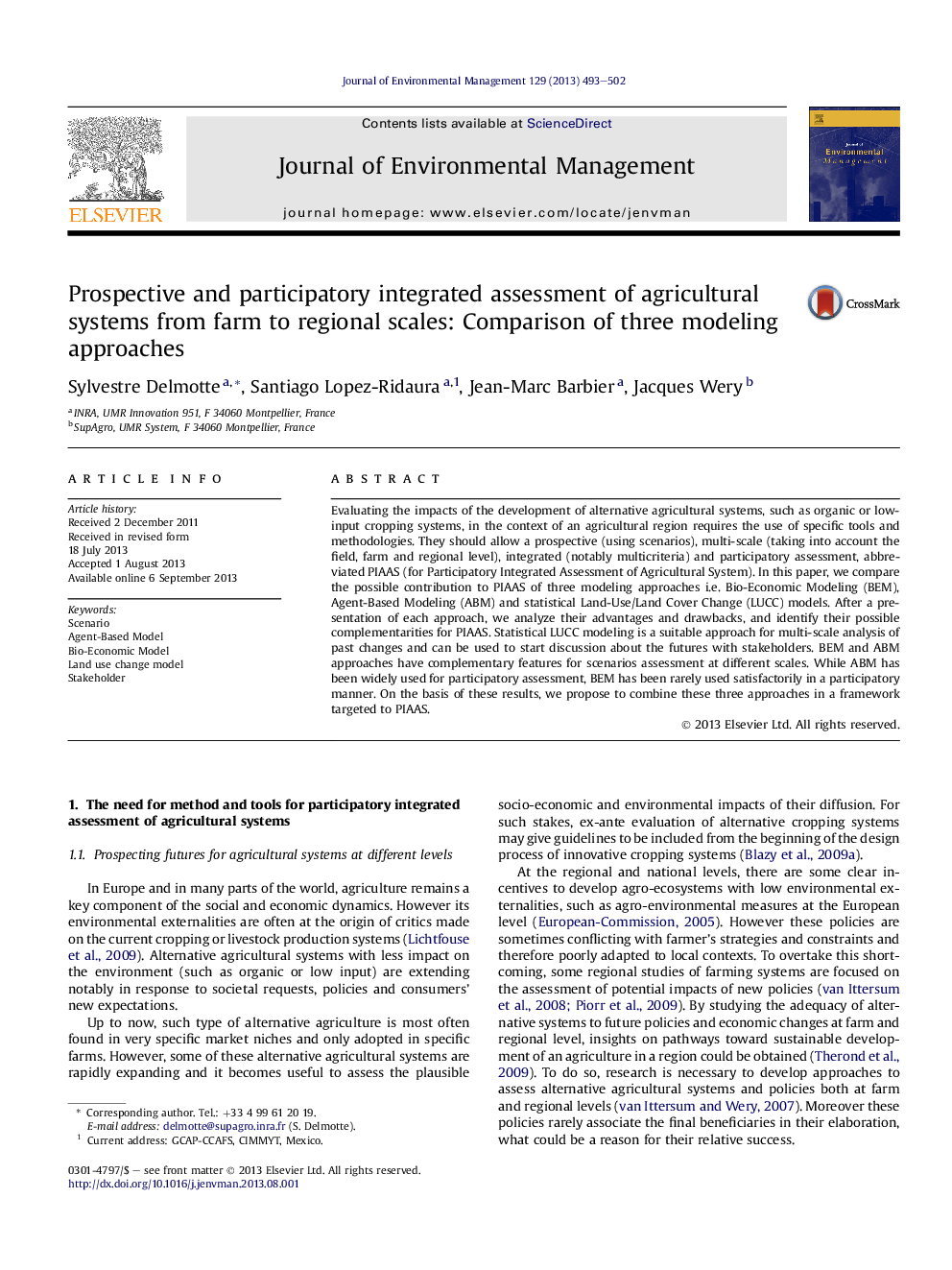| کد مقاله | کد نشریه | سال انتشار | مقاله انگلیسی | نسخه تمام متن |
|---|---|---|---|---|
| 1056193 | 1485283 | 2013 | 10 صفحه PDF | دانلود رایگان |

• We define a framework for participatory integrated assessment of agricultural systems.
• We compare the possible contributions of three modeling approaches for PIAAS.
• They are agent-based, bio-economic and statistical land use change modeling.
• We propose a combination of the three methods getting the most out of their complementarities.
Evaluating the impacts of the development of alternative agricultural systems, such as organic or low-input cropping systems, in the context of an agricultural region requires the use of specific tools and methodologies. They should allow a prospective (using scenarios), multi-scale (taking into account the field, farm and regional level), integrated (notably multicriteria) and participatory assessment, abbreviated PIAAS (for Participatory Integrated Assessment of Agricultural System). In this paper, we compare the possible contribution to PIAAS of three modeling approaches i.e. Bio-Economic Modeling (BEM), Agent-Based Modeling (ABM) and statistical Land-Use/Land Cover Change (LUCC) models. After a presentation of each approach, we analyze their advantages and drawbacks, and identify their possible complementarities for PIAAS. Statistical LUCC modeling is a suitable approach for multi-scale analysis of past changes and can be used to start discussion about the futures with stakeholders. BEM and ABM approaches have complementary features for scenarios assessment at different scales. While ABM has been widely used for participatory assessment, BEM has been rarely used satisfactorily in a participatory manner. On the basis of these results, we propose to combine these three approaches in a framework targeted to PIAAS.
Journal: Journal of Environmental Management - Volume 129, 15 November 2013, Pages 493–502